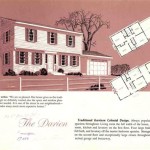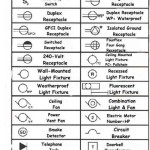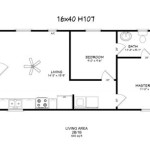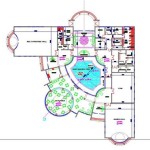Ranch House Plans With Basement Garage: Maximizing Space and Functionality
Ranch house plans, known for their single-story living and horizontal layout, have remained a popular choice for homeowners due to their accessibility, adaptability, and ease of maintenance. Integrating a basement garage into a ranch-style home plan presents a unique opportunity to expand living space, add functionality, and address challenging lot conditions. This design approach is particularly advantageous in areas with limited lot sizes, sloping terrain, or where climate considerations necessitate protected parking. This article delves into the various aspects of ranch house plans incorporating basement garages, exploring their benefits, design considerations, structural implications, and suitability for different needs and preferences.
The appeal of ranch house plans lies in their open floor plans, single-level living, and seamless integration with the outdoors. The addition of a basement garage allows homeowners to efficiently utilize the footprint of their property, providing secure parking, additional storage, and potentially finished living space without compromising the aesthetic or accessibility of the primary living area. The integration, however, requires careful planning and consideration of specific site characteristics and structural requirements.
Key Benefits of Integrating a Basement Garage
The incorporation of a basement garage into a ranch house plan offers a multitude of benefits contributing to the overall value and functionality of the home. These advantages extend beyond mere parking and should be carefully evaluated during the planning phase.
Firstly, a basement garage addresses spatial limitations. In urban areas or hillside lots where above-ground space is at a premium, a basement garage allows for efficient utilization of the property’s footprint. Instead of sacrificing yard space for a detached garage or struggling with on-street parking, homeowners can seamlessly integrate parking directly into the home's foundation. This maximizes usable land for landscaping, outdoor living areas, or other amenities.
Secondly, climate protection is a significant benefit. In regions with harsh winters or extreme weather conditions, a basement garage provides protected parking for vehicles, shielding them from snow, ice, and sun damage. This enclosed space can also be insulated, mitigating temperature fluctuations and reducing the risk of freezing pipes or starting a cold engine. Moreover, a basement garage offers a convenient and safe transition from the car to the home during inclement weather.
Thirdly, the design fosters enhanced security and convenience. A basement garage allows for direct access to the home, eliminating the need to traverse an open yard, especially at night or during inclement weather. This direct access enhances security, as homeowners can enter their homes directly from their vehicles without being exposed to the outside. The enclosed space also provides an added layer of security against theft or vandalism compared to detached garages or open parking areas.
Finally, utilizing the space for additional storage and flexible use opportunities is a potential benefit. Beyond parking, a basement garage can serve as a versatile storage area for tools, equipment, seasonal items, or recreational gear. The space can also be partially or fully finished to create a workshop, home gym, or other specialized areas, adding significant value and functionality to the home. Depending on local building codes and zoning regulations, it may even be possible to create an Accessory Dwelling Unit (ADU) within the basement space, providing rental income or accommodating family members.
Crucial Design Considerations for Ranch House Plans With Basement Garages
Designing a ranch house with a basement garage demands careful consideration of various factors to ensure structural integrity, functionality, and aesthetic harmony. Neglecting these aspects can lead to costly revisions and potential problems during construction and occupancy.
The slope of the lot significantly impacts the design. A sloping lot is often ideal for a basement garage, as it allows for a walk-out or drive-in access point without extensive excavation. The design should leverage the natural topography to minimize the amount of grading required and to optimize the placement of the garage entrance. The angle of the driveway, the turning radius, and the overall accessibility for vehicles must be carefully considered to ensure ease of use and safety.
Proper drainage is crucial. Basement garages are susceptible to water infiltration if not properly protected. Effective drainage systems, including French drains, sump pumps, and waterproof membranes, are essential to prevent moisture from seeping into the basement. The surrounding landscaping should be graded to direct water away from the foundation, and downspouts should be extended to carry water away from the garage entrance.
Adequate ventilation is mandatory. Basement garages are prone to accumulating fumes and odors from vehicles. Proper ventilation is crucial to maintain air quality and prevent the buildup of harmful gases. Ventilation systems can include natural ventilation through windows or vents, as well as mechanical ventilation systems that actively circulate air. Carbon monoxide detectors should be installed to alert occupants to dangerous levels of this odorless and potentially deadly gas.
Furthermore, integrating the garage entrance with the overall architectural style of the house should be considered. The garage door should complement the design of the ranch house, and the entrance should be seamlessly integrated into the landscaping and exterior aesthetics. A poorly designed garage entrance can detract from the curb appeal of the home. Consider using materials and finishes that match the rest of the house, and incorporate landscaping elements to soften the appearance of the garage door.
Structural and Construction Implications for Basement Garages
Building a basement garage requires specialized construction techniques and careful attention to structural integrity. The foundation must be strong enough to support the weight of the house and withstand soil pressure, and the garage entrance must be properly engineered to prevent collapse.
Foundation design is critical. The foundation of a ranch house with a basement garage needs to be specifically engineered to withstand the lateral pressure of the surrounding soil. The foundation walls must be reinforced with steel rebar and properly waterproofed to prevent water infiltration. The footings must be adequately sized to distribute the weight of the house evenly across the soil.
The garage door opening requires specialized framing. The garage door opening is a large opening in the foundation wall that requires careful framing to prevent collapse. The header above the garage door must be adequately sized to carry the load of the wall above it. The side walls of the opening must be securely tied into the foundation to prevent them from buckling under pressure. Proper shoring and bracing are essential during construction to ensure the stability of the structure.
Excavation and retaining walls are often necessary. Building a basement garage often requires excavation to create the necessary space for the garage. If the lot is sloping, retaining walls may be necessary to support the surrounding soil. Retaining walls must be properly engineered to withstand the lateral pressure of the soil, and they must be designed to prevent water from accumulating behind them. The cost of excavation and retaining walls can be a significant factor in the overall cost of the project.
Integrating utilities involves careful planning. The location of utilities such as water lines, sewer lines, and electrical wiring must be carefully planned to avoid interference with the garage. The garage should be equipped with adequate lighting and electrical outlets, and the electrical system should be properly grounded to prevent electrical shock. Plumbing fixtures may also be necessary in the garage, such as a utility sink or a hose bib.
Cost considerations also play a crucial role. Building a basement garage is typically more expensive than building a detached garage or a carport. The added cost is due to the excavation, foundation work, and specialized framing required. However, the added cost can be offset by the added value and functionality that a basement garage provides. Homeowners should carefully consider their budget and weigh the costs and benefits before deciding to build a basement garage. Obtaining multiple bids from qualified contractors is recommended to ensure a competitive price.

Ranch Homeplans Walk Out Basement Unique House Plans Floor

3 7 Bedroom Ranch House Plan 2 4 Baths With Finished Basement Option 187 1149

3 Bed Craftsman Ranch Plan With Unfinished Basement Architectural Designs 135021gra House Plans

Simple House Floor Plans 3 Bedroom 1 Story With Basement Home Design 1661 Sf Ranch
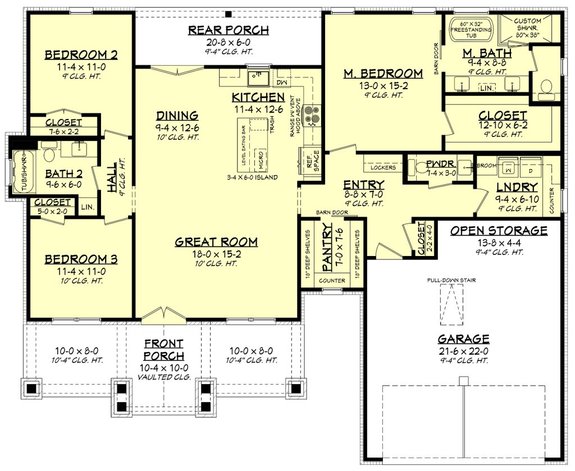
Versatile Spacious House Plans With Basements Houseplans Blog Com

Sprawling Craftsman Style Ranch House Plan On Walkout Basement 890133ah Architectural Designs Plans

House Plan 92616 Ranch Style With 1593 Sq Ft 3 Bed 2 Bath

Ranch Style House Plans With Basement All About Floor And More

Don Gardner Walkout Basement House Plans Blog Eplans Com

3 7 Bedroom Ranch House Plan 2 4 Baths With Finished Basement Option 187 1149


